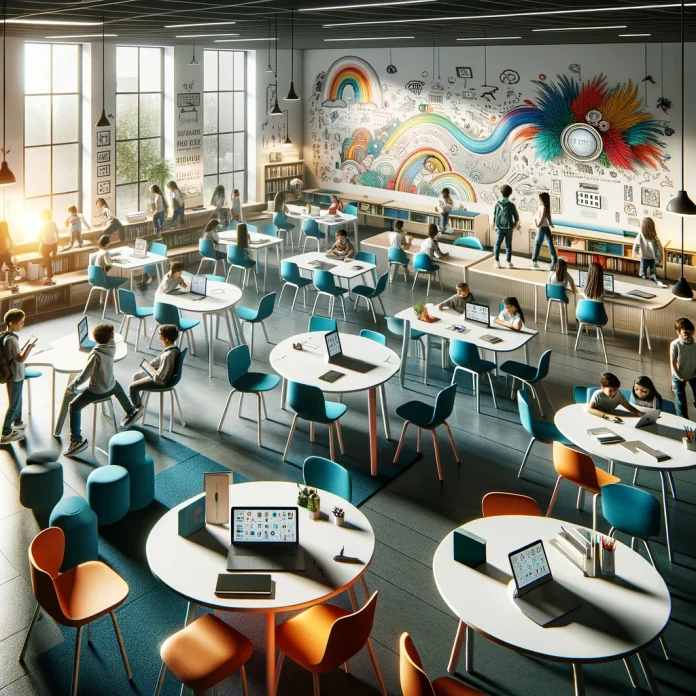The traditional classroom setup has transformed over the years, with a growing recognition of the physical environment’s crucial role in shaping students’ learning experiences. One often overlooked aspect for improvement is classroom furniture. This guide will help you understand how furniture can enhance student engagement, comfort, and overall academic performance.
Ergonomics and Comfort
When creating an optimal learning environment, you should consider the physical well-being of students. Ergonomically designed chairs and desks are not mere luxuries but essential components contributing to students’ comfort and health. Studies have consistently shown that students who sit comfortably are more likely to stay focused and attentive during class. Discomfort and distractions caused by poorly designed furniture can lead to physical pain and hinder learning.
Incorporating ergonomic furniture into classrooms supports good posture, reducing the risk of health issues. Students are better positioned to concentrate on the subject when they are physically comfortable. This will then positively impact their overall academic performance.
Flexible Learning Spaces
Rigid, fixed seating arrangements have given way to a more dynamic approach with flexible learning spaces. Adaptable furniture allows for a more accessible classroom layout. The ability to rearrange desks and chairs promotes a sense of ownership among students. This option will enable them to create a learning environment that suits their needs for a particular activity.
Research suggests that students in classrooms with flexible seating arrangements exhibit increased levels of engagement and participation. You can empower students to choose the setting that best suits their learning style through seating options, such as standing desks, bean bags, or collaborative tables.
Technology Integration
Integrating technology into the learning process is essential in today’s digital age. School furniture plays a crucial role in supporting this integration. Furniture with built-in charging ports, adjustable device heights, and effective cable management systems provide a seamless technological experience.
Technology-friendly furniture not only facilitates the use of electronic devices but also encourages a more interactive and dynamic teaching style. With the right furniture, educators can easily incorporate multimedia elements, interactive presentations, and online resources into their lessons, creating a more immersive learning environment for students.
Classroom Organization and Flow
The layout and organization of a classroom significantly impact the flow of activities during a lesson. Well-designed furniture can help create a structured and organized environment, reducing distractions and fostering positive teacher-student interactions.
An organized classroom allows educators to manage their teaching materials efficiently, making it easier to transition between different activities. As a result, students have a smoother and more focused learning experience. Strategic furniture placement can also contribute to better traffic flow, minimizing disruptions and creating a conducive atmosphere for learning.
Aesthetics and Psychological Impact
The aesthetic appeal of a classroom is not just a matter of decoration; it has a profound psychological impact on students. Colors, shapes, and aesthetics can influence students’ moods, behavior, and concentration levels. Creating an atmosphere that enhances the learning experience requires a visually appealing environment.
Investing in well-designed and visually appealing furniture contributes to a positive classroom culture. Simple elements like vibrant colors, comfortable textures, and creative designs can create a welcoming and stimulating environment that positively influences student’s attitudes toward learning.
Student Engagement and Active Learning
Dynamic furniture that supports active learning methods can significantly boost student engagement. Traditional rows of desks can limit movement and interaction. In contrast, furniture designed for collaboration and movement can promote active lesson participation. Standing desks, flexible seating options, and interactive whiteboards are just some pieces of furniture that encourage active learning.
When students actively engage in learning, they are more likely to retain what they have learned while enjoying the educational journey. Incorporating furniture that supports active learning creates an environment where students actively participate in their education.
Conclusion
Classroom furniture’s impact on student learning is a multifaceted aspect that you should consider. Educators and school administrators should also consider the holistic benefits of investing in quality classroom furniture. By doing so, they not only enhance the physical comfort of students but also contribute to a more conducive and engaging atmosphere for learning.
As we prioritize creating optimal learning environments, let us recognize the transformative power that thoughtful and well-designed furniture can have on shaping students’ educational experiences.






